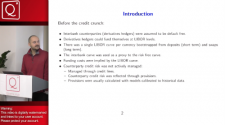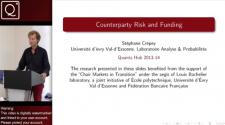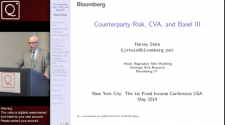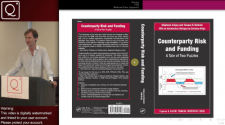Workshop view
Back to Shop
XVA: Valuation Adjustments: Pricing and Risk
Valuation Adjustments: Pricing and Risk Management
Presenter: Andrea Prampolini: Head of Counterparty Risk Management, Banca IMI
Course Running Time: 5 Hours 15 Minutes
Course Running Time: 5 Hours 15 Minutes
Session 1: (Running Time: 1:34:18)
Session 2 (Running Time: 1:04:17)
Session 3: (Running Time: 1:29:47)
Session 4 (Running Time: 1:07:55)
Adjusting the value of derivatives
- The rise of a hybrid asset class
- Operational evolution
- Perspectives on value
Credit Value Adjustment
- Counterparty risk and financial stability
- Computing conditional expectations
- Global calibration
- Sensitivities
- Transfer pricing
- Mitigation and management
Debt Value Adjustment
- Fair value and the law of one price
- Hedging DVA
- Allocation of DVA cost
Funding Value Adjustment
- Funding cost and funding benefit
- Evidence from the novation market
- Managing FVA
- Financing initial margin
Capital charge
- Forward RWA
- Managing the cost of capital
- Contingent capital structure
Academic level
Topic
Credit RiskPublished date
12 March 2014Price
£199.00Related workshops

Massimo Morini
Interest Rate Modelling: Modern Interest Rate Modelling with Collateral, Funding and Credit (Part 2)
4 March 2014
Luis Manuel García Muñoz
XVA: Pricing Derivatives in the New Framework: OIS Discounting, CVA, DVA and FVA
1 April 2014





